Karen Brooks's Blog
December 22, 2014
A King’s Ransom by Sharon Kay Penman
When you pick up a Sharon Kay Penman book, you know you’re not only in the hands of a masterful storyteller, but someone with such a deep respect, passion and knowledge of the era she’s writing in as well, that the past comes to life on every single page. So it is with A King’s Ransom, the sequel to Lionheart,  which continues the saga of Richard, Coeur de Lion, by focussing on his amazing journey home from the Crusades.
which continues the saga of Richard, Coeur de Lion, by focussing on his amazing journey home from the Crusades.
Richard’s quest to seize control of his lands and take up his rightful position and the power it grants him as King, has been undermined by both his treacherous brother and the duplicitous French king, Philippe, making his journey home even more urgent and essential.
Each leg of the journey is described in detail, allowing us to travel beside Richard as he endures the stuff of legend. His journey home literally becomes Homeric, casting him as an Odysseus, one who like his ancient forebear, is beset by storms, ship wreck, illness, forced separation of his men and ghastly monsters in the form of the Holy Roman Emperor who imprisons Richard and his knights and refuses to release him unless an outrageous ransom is paid.
It’s not only Richard’s trials we follow but also those of his sweet wife, Berengaria, his magnificent mother, Eleanor of Acquitane and his sassy sister, Joanna. They too have their own tests of endurance – whether it’s the conditions under which they’re forced to live and travel, or the torment of not knowing what’s happened to their beloved husband, son and brother and an uncertain future.
In this book, we also see Richard, who can be alternately courageous, foolhardy, loyal, irrational and bad-tempered, wielding the statecraft he clearly learnt from his mother’s knee. Richard is both honest and a wonderful speaker, who brandishes words with the same skill he does the sword. A charismatic and natural born leader, the chapters in Germany particularly are thrilling as you sense the tide shifting, finally, in Richard’s favour.
It’s only once Richard and Berengaria are able to reunite that a different side of the king is shown. Penman does the most wonderful job of exploring the reasons for Richard’s seemingly aberrant behaviour and describing his wife’s acute pain at her treatment. This is all eruditely and convincingly explained in the Author’s Notes – which are sensational in themselves. I love Penman’s author’s notes.
The last chapters of this hefty book are unputdownable as the main characters’ lives reach conclusions that, even if you know your history and the outcome, are alternately devastating, heart-wrenching and very gratifying. I wept, sighed, cried out in protest and went through a roller-coaster of emotions – and I knew what was going to happen!!! This is a testimony to the world and people Penman has created, the way she’s transformed historical figures into living breathing people the reader cares deeply about – or loathes! When a particularly nasty character gets their comeuppance, you can’t help but feel gratified as well.
This was a magnificent book, a rich and vibrant retelling of a man known to us through history and legend. What I also loved was the way the other characters in his life where given moments where they too took centre stage, particularly some of the women. I wept for them most of all.
What a tale, what a writer. More please Sharon!
December 21, 2014
Treason: A Catholic Novel of Elizabethan England by Dena Hunt
This was a really interesting read if for no other reason than it examined the paranoia and cruelty extant around recusants during the latter part of Elizabeth 1st’s reign – 1581. Focussing on a small cast of mostly Catholics, who are hiding their faith and the various rites that form part of their belief system from t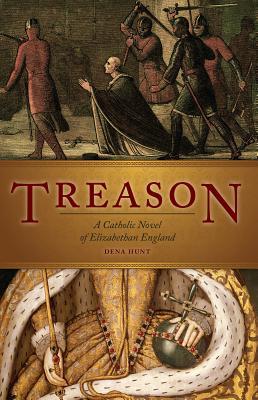 he Protestant majority, the novel, which occurs over a few days, explores their desperation and fear.
he Protestant majority, the novel, which occurs over a few days, explores their desperation and fear.
There are two principal characters around which the rest of the cast orbit: a young woman who desires to be a nun but was forced into marriage with a Protestant to protect her, and a freshly minted priest sent to English shores by the Society of Jesus to offer solace to English Catholics and convert other souls.
Because it’s told from the Catholic point of view alone, it does read like propaganda, the reign of “Bloody Mary” – where a few hundred “heretic” Protestants were put to death, and the mass slaughter of the Hugenots across France and other parts of Europe – conveniently forgotten. Likewise, the fact two Popes issued Bulls against Queen Elizabeth, offering to pardon anyone for murdering her, as she was a heretic, thus encouraging civil war and worse, is overlooked as the tragedy and betrayal of these good Catholic folk is portrayed.
With few exceptions, Protestants are very much the villains in this novel. They’re either bloodthirsty hunters of Catholic souls or vainglorious and self-righteous about Catholics and gloating in the deaths and exposure.
In the end, this is what troubled me; how black and white the book appeared. I didn’t mind reading about the whole religious schism and fears of plots and heretics and what it signified for the Queen and government from a Catholic point of view at all. Writing in this period myself and having spent now almost two years immersed in it, the whole question of religion and how political as well as personal it was is utterly fascinating and distressing. Knowledge of the early Renaissance (and other historical periods) also reveal how many wars and injustices, as well as bloody murder, have been committed in the name of God. This is by no means a modern phenomenon. We really haven’t learnt from history. What I didn’t like was the reductive way in which both sides of the religious coin were portrayed – as simplistic “goodies” or “baddies” – even though some of the characters themselves were really interesting beyond and because of their faith. While the novel is mostly historically accurate, a few more shades of grey would have also reflected the actual period, as well as the politics and even religion better as well.
Nonetheless, it was interesting to read about this fraught time from a different, if very myopic religious, point of view.
December 1, 2014
Book Review: The Tudor Vendetta by C.W. Gortner
The third book in the thrilling Spymaster Chronicles series, The Tudor Vendetta, has, so far, been the one I’ve most enjoyed and that’s saying something because the other two were terrific as well.
 Opening when Elizabeth takes the throne in 1558, after her Catholic half-sister, “Bloody Mary” has died, it sees Brendan Prescott, our bastard Tudor and spy, summoned home to England.
Opening when Elizabeth takes the throne in 1558, after her Catholic half-sister, “Bloody Mary” has died, it sees Brendan Prescott, our bastard Tudor and spy, summoned home to England.
No longer an ingénue in this game of thrones, Brendan has been trained by none other than Francis Walsingham, the man who would later rise to become Elizabeth’s secretary (but, at this stage of the novel functions more like a shady Q or rival agent from the Bond movies/novels – and that’s a good thing!).
Arriving back in England, Brendan not only has to try and find the perpetrator behind another ghastly plot against the queen, but also face his own demons and the mess he left his personal life in when he was forced to flee England at the end of the last novel.
Clearing up others’ strife is Brendan’s strong suite, not his own and, since he is no longer master of his own destiny, it’s difficult for him to reconcile with his beloved, Kate, so misunderstanding and mis-steps abound. When Elizabeth’s favourite lady-in-waiting, Lady Parry goes missing, Brendan is asked – no, ordered (like he has a choice!) – to find her.
Sent to a desolate, fog-bound mansion in the north of the country, armed with his own wits as well as a series of half-truths from his employer, and the deadly enmity of Sir Robert Dudley, Brendan tries hard to learn Lady Parry’s fate. Once again, however, as the plot thickens and intrigues deepen, Brendan finds not only his own life in jeopardy, but also that of the woman he has vowed he would die to protect.
Only this time, it looks as if Brendan’s vow is about to be seriously tested for it’s clear there’s a vendetta not only against him, but against Her Majesty as well.
Steeped in history, bringing the characters and era to wonderful life, Gortner has written a page-turner that’s part Gothic-mystery, part spy novel and romance as well as a race against time narrative that positively flies. I love the way Gortner weaves his fiction through known fact and takes advantage of gaps and omissions in historical sources and well-known figures’ lives to be inventive and create a superb read. An example is the way he manipulates Francis’ Walsingham’s story. Though Walsingham did return from self-imposed exile to England when Elizabeth was back on the throne, biographers don’t believe he was part of any “spy network” until much later. Certainly, he didn’t emerge has “head” of one until at least the very late 1570s, probably 1580 on. But I loved that Gortner positioned him as a (sinister) secondary player and as someone already well known to Cecil (which he was, but likely not in that sense) and versed in the arts of intelligencing.
Though this would make an excellent finale to a great trilogy, I am really hoping there are more Brendan Prescott books to follow, after all, its early days in Elizabeth’s reign, and so much more to happen – isn’t there, please C.W. Gortner?
November 27, 2014
Book Review: The Burning Room by Michael Connelly
Ever since I started reading Michael Connelly books a few years ago, I’ve always looked forward to the next instalment in the series and especially a new Harry Bosch – a character of whom I’ve grown very fond over the years. The Burning Room is the nineteenth book with Bosch as the protagonist and those who have been following the series know that not only is he past retirement age now but he’s been redeploye d on a special contract – the appropriately named “DROP” plan, working cold cases.
d on a special contract – the appropriately named “DROP” plan, working cold cases.
In this one, Bosch has a new partner, the medal-awarded young officer and public hero, Lucia Soto, who has her own skeletons in the closet and axe to grind with justice.
The story opens with Bosch attending the autopsy of a man who was shot years earlier in a case that was never solved. Bosch and Soto are given the responsibility of trying to track down the shooter. Retrieving old files and looking at a case that other detectives failed to solve, re-interviewing suspects and walking ground that has been well-trod is sensitive at the best of times, but when political figures appear to be involved, the stakes suddenly become much, much higher. As Bosch warns the young Soto, you should never open the door on a burning room…
Woven through this story are the usual departmental politics, the unsupportive hierarchy more worried about meeting budget than catching the right criminals, and Bosch’s personal and professional life. This is given an additional frisson as Bosch tries to pass on good policing to Soto, demonstrating there is a still a time and place for the gum-shoe approach to detective work, the hard, pedantic slog and essential hands-on and foot-work as opposed to sitting at a desk all day and surfing the web or relying on the phone.
Back on the home front, his daughter is thinking of becoming a cop. At seventeen, she not only does work-experience with a specific arm of the force, but is also slowly developing into an adult and the inevitable distance between parent and child (as the child’s priorities and need for autonomy assert themselves) develops. This is subtly and well handled, the daughter being a minor character in this novel just as Bosch is now becoming (for the time being at least) in hers.
Added to all this is the sense that Bosch is approaching the end of a long and wonderful career. I thoroughly enjoyed this book – found it difficult to put down – and certainly, regular fans of the series have the reward of knowing Bosch’s back story, delighting in his triumphs and seething when he is unfairly treated. We also understand why he acts in particular ways or says certain things. But new readers (and old) would derive pleasure from the great pacing, good dialogue and the humanity that underpins the central characters and their determination to solve the crime.
I sincerely hope we get to read a great deal more about Bosch and that he has the opportunity to continue to put his formidable experience, knack for solving crimes and sense of social justice to good use for a long time yet.
November 26, 2014
Meet My Character: Blog Hop
This is an unusual blog for me as I don’t often write about my books (a situation that will change as I am upgrading/changing my website soon – watch this space!) but the notion came via a lovely invitation from the wonderful writer, Josephine Pennicott, author of the fabulous Poet’s Cottage and Currawong Manor as well as award-wining crime novels. This is a “meet my character blog”, where I answer questions about a character from one of my books or a work in progress. I have chosen to discuss the lead character in my latest novel, The Brewer’s Tale which is published by MIRA, Harlequin. I really hope you enjoy learning a little more about her – thank you for the opportunity, Josephine!
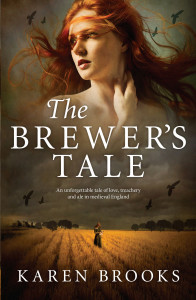
My latest novel
1.) What is the name of your character?
When the reader first meets her, she’s called Anneke Sheldrake but due to circumstance, she undergoes a slight name change, taking her mother’s family’s name and hoping it gives her some anonymity and autonomy as well as the ability to put the past behind her.
2.) Is he/she fictional or a historic person?
She is most definitely a fictional person but her life-story is grounded in historical research and fact. Some women had incredibly tough and poignant lives and Anneke’s, with all its trials and tribulations, reflects that.
3.) When and where is the story set?
It’s set in early Fifteenth Century England, commencing in the fictional town of Elmham Lenn (on the east coast of England and loosely modelled on Bishop’s Lynn (now King’s Lynn) and Cromer) before moving to Dover, then Southwark. In order to be authentic, I not only read many, many books, articles, spoke to brewers and distillers and poured over old maps,  but in the final stages of editing, travelled to the United Kingdom. At one stage, I wandered along the Thames, walking in my characters’ footsteps. I stood on the banks of the river, in Southwark, in approximately the place Anneke ends up living, which is in a dwelling called “The Swanne”. Lo and behold, when I turned my back upon the river to see what was built there now, what did I see but this…
but in the final stages of editing, travelled to the United Kingdom. At one stage, I wandered along the Thames, walking in my characters’ footsteps. I stood on the banks of the river, in Southwark, in approximately the place Anneke ends up living, which is in a dwelling called “The Swanne”. Lo and behold, when I turned my back upon the river to see what was built there now, what did I see but this…
A modern day pub called “The Swan”. I confess, I welled up and then went had a drink (or two) to celebrate! How amazing is that – not that I was drinking – but the serendipity of it all?
4.) What should we know about him/her?

After her father drowns at sea, and Anneke and her young siblings are left orphans, she is forced to make a living in order to keep her family together, so turns to what once made her mother’s family in The Netherlands prosperous, brewing ale. This not only drives her into competition with nearby producers but more significantly, the local priory who dominate the market and do not like others impinging on their trade. Beyond being an excellent and ethical brewer, Anneke is loyal, brave, smart and lovely – inside and out. But she finds being a female brewer tarnishes her reputation and exposes herself and those she loves to terrible danger.
5.) What is the main conflict? What messes up his/her life?
The main conflict comes in the form of people and organisations with power – familial, social, financial, class, political, those who don’t like seeing a single, talented and lovely woman succeed – so the people representing these forces come in various shapes, sexes and sizes, from family relations to bailiffs, ale-conners, sheriffs, and the church.
There is much that “messes up” her life, and in this regard, despite so much happening, it reflects what women of that era endured. But there is always hope and love and friendship as well.
6.) What is the personal goal of the character?
To be ethical and successful; to be loyal in love and life, to care for those for whom she is responsible and to not let injustice, in any guise, win.
7.) Is there a working title for this novel, and can we read more about it?
It’s called The Brewer’s Tale. It was its working title (drawing inspiration from Geoffrey Chaucer’s The Canterbury Tales – it even features the Wife of Bath as a character) and that never changed. You can read more about it at Harlequin’s website (which also features a video with me discussing this and my next novel) http://www.harlequinbooks.com.au/product/9781488742620 or just Google the title.
8.) When can we expect the book to be published or when was it published?
It was published by MIRA, Harlequin October this year!
Now it is my turn to nominate another author to introduce you to their character. It is with great pleasure, that I would like to introduce you to Sheryl Gwyther.
 Sheryl is a children’s author and artist who has written many books, such as the wonderful Secrets of Eromanga, as well as
Sheryl is a children’s author and artist who has written many books, such as the wonderful Secrets of Eromanga, as well as 
plays and short stories and is actively involved in the writing community and very generous with her time and support. I know she is juggling many writing balls at the moment, so I’m looking forward to discovering which of her characters she decides to let us meet.
Over to you, Sheryl!
November 19, 2014
Book Review: Lamentation by C.J. Sansom
The Matthe w Shardlake series of novels, about a hunchback lawyer practicing in the time of Henry VIII, are simply wonderful and this, the sixth in the series, does not disappoint.
w Shardlake series of novels, about a hunchback lawyer practicing in the time of Henry VIII, are simply wonderful and this, the sixth in the series, does not disappoint.
After a horrible and explosive beginning, the story unfolds slowly but effortlessly, immersing the reader back in not only Henry VII’s final months, but also Shardlake’s life and law practice.
It’s autumn 1546, and King Henry, obese and quite disabled, is nearing death. Aware of this, the mercurial king, who forced his country from Catholicism and the yoke of Rome to Protestantism, dissolving the monasteries, claiming their vast wealth and punishing those who refused to acknowledge his supremacy over the new church, is once again undergoing an existential crisis. Vacillating between Popery and Protestantism, a struggle based on religious principles begins and those behind the throne with the greatest to win or lose begin to make their move. Henry may be dying, but he is powerful and vindictive, sending friends and foe to the Tower with ease, for if there’s one thing he can’t abide it’s those he perceives as disloyal, and keeping secrets is among the worst of sins.
When Protestant Queen Katherine discovers a book she’s written called Lamentation, and which describes her personal and Protestant religious beliefs, has been stolen, she is panic-stricken. Knowing her faith goes against that held by her husband and that there are those on his council plotting her downfall, the book could be the exact weapon they need. Keeping the book and its theft secret from the king, she summons Shardlake to her side and begs his help.
Unable to resist his queen, Shardlake knows discovering who has stolen the book will not only be difficult, but very, very dangerous. When bodies start to pile up, his greatest fears are realised, only the terrible threat to him and those he loves is yet to materialise…
This is a marvellous story that plunges you into late medieval London and doesn’t let you go. Sansom takes his time with the story, allowing it to time to evolve, walking the reader through the familiar and pungent streets of Shardlake’s neighbourhood and other parts of London, the cloisters of various palaces, or taking us on uncomfortable rides outside the city walls. We feel the hot breath of summer, the discomfort of the fabrics as they cling to sweaty limbs, the stink of the river, and the fear of darkness and those who lurk in the shadows, watching and waiting.
Evoking this period and the terror, suspicion and religious persecution that accompanied it, as well as the fight for supremacy in the court and kingdom, Sansom has written a wonderful historical and crime novel that nonetheless still manages to capture not only the era, but Shardlake’s personal life and his complex but kind and intelligent character. Other characters are also beautifully drawn and we empathise with their efforts and troubles as well as enjoy their triumphs. A wonderful secondary narrative about two squabbling and vile siblings is also very well executed.
I was absorbed in this tale that on occasion made me gasp with horror and genuinely fear for characters. Without spoiling the story, the last pages of the novel were both an ending and beginning, but I sincerely hope we haven’t seen the last of Shardlake yet. The author’s notes at the end are also a marvellous read, revealing not only Sansom’s level of research, but his dedication to and passion for crafting a compelling tale.
November 3, 2014
Book Review: Daughters of the Storm by Kim Wilkins
This is an extraordinary novel that once I started reading it, found it hard to tear myself away from. Actually, I didn’t read this book – I devoured it – greedily. In Daughters of the Storm, Kim Wilkins, a masterful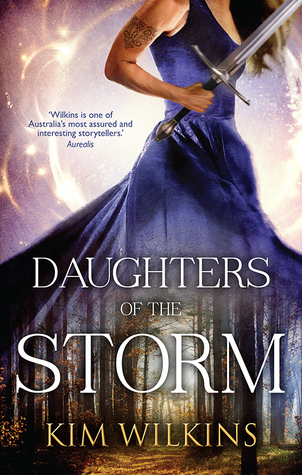 storyteller, presents us with a rich and detailed historical fantasy featuring a poisoned king, his five very different daughters, and a land in existential and leadership crisis.
storyteller, presents us with a rich and detailed historical fantasy featuring a poisoned king, his five very different daughters, and a land in existential and leadership crisis.
Drawing on her vast knowledge and love of Anglo-Saxon England, Wilkins gives us a vivid and diverse world where faith, magic and individuals collide and geographical borders are only as strong as the leader enforcing them. When the King of Thyrsland lapses into a magic-induced sleep, suspicion turns not so much outwards as one would expect, but inwards towards his family. His eldest daughter, the formidable warrior, the wonderfully named Bluebell, determines to rescue her father from this grave enchantment – not only because she loves him dearly and blindly, but also for the sake of the kingdom she will one day inherit. Recognising the power that keeps him comatose is the wild “undermagic” and the only one who can help them is someone of their own blood, Bluebell employs her sisters’ help. Along with her mostly unwilling siblings, she embarks on a journey to find a cure and in doing so bring the kingdom back from the brink of war. Tall, scarred, strong, capable and tattooed, Bluebell inspires loyalty and loathing in equal measure, and not just from her men or the enemies she encounters but, as she’s to learn, from those closest to her as well.
What Bluebell doesn’t bargain on is her sisters and the terrible secrets they hide, secrets that have the potential to not only undo her intentions, but tear the family apart as well.
While this is at one level a quest novel, the journey the main characters undertake is not simply physical, but psychological and emotional. So it is with Bluebell and her sisters who are also forced to examine the past and their own choices, in relation to the present and, indeed, the future. Mostly estranged from each other, they’re presented to the reader as three-dimensional characters with their flaws, foibles and strengths on display. Whether it’s the unhappily married mother, Rose, the mystic Ash, or the twins, the sanctimonious Willow and hormone-charged Ivy (both of whom you often want to slap in the face), they feel real and whole and thus you can appreciate the choices they make, even when you wince or wonder why. Complicated, and passionate, the shifting viewpoint in the novel allows us to get to know each of them over the course of the story and you find yourself allying with one then another, or despairing at what you know the outcome will be… only, in typical Wilkins’ fashion, you don’t know. They are not always likeable either, and I love that Wilkins has taken such a risk as making her major characters unattractive at times – just like real life. You may not always like them, but you do understand them – this is clever writing that doesn’t condescend to readers.
This is also where Wilkins excels as a novelist, in her ability to present readers not only with a terrific tale, but with complex, fascinating characters with their own rationale for action, gently exposing the deep motivations that drive them, even if they take a little while to be revealed. But it’s not only the women who are represented this way either. Daughters of the Storm also has some wonderful and imperfect male characters as well – from the slumbering king, to the bitter Wylm, the brutish Raven King, Hakon, the lonely undermagician, and the love-lorn Heath.
With a kicker-twist at the end, this is a marvellous book and my only disappointment is that I have to wait for part two of what is a simply brilliant addition to one of my favourite genres and from one of my favourite writers.
October 26, 2014
Book Review: First Impressions by Charlie Lovett
My first impressions of this lovely novel by Charlie Lovett were more than favourable as I lost myself in this skilfully woven dual narrative of a modern young woman, Jane Austen, Pride and Prejudice, plagiarism, lo ve and so much more.
ve and so much more.
Book lover and Jane Austen aficionado, Sophie Cunningham, not only comes into an unexpected and bitter-sweet inheritance, but takes a job with an antiquarian book dealer in London. Grieving, confused about where her life is leading, but happy, as always, to take solace from books and the unexpected attentions of an American traveller, she has her suspicions aroused when two completely different customers request the same obscure and trifling book, the Little Book of Allegories, second edition by a Reverend Richard Mansfield, in a matter of days. One of the customers is the handsome and incorrigible Winston, the other a shady, threatening voice on the end of the phone, George Smedley, who promises Sophie a great deal of trouble if she does not fulfil his request.
Segueing back to 1796, the novel also follows the developing and touching friendship of aspiring young novelist, Jane Austen, and the octogenarian, Richard Mansfield. Sharing a love of words and stories, as well as confidences, Jane and Richard become very attached and propose to help each other’s ambitions by embarking on a literary project together.
In the meantime, Sophie’s efforts to locate the obscure book by the Reverend Mansfield unearth a potentially huge literary scandal involving Austen and the authorship of Pride and Prejudice. Torn between two very different men and their intentions towards her and the book she is tasked to find, as well as the dangers posed by Smedley and the threats he continues to unleash, Sophie’s search becomes a matter of life, death and literary reputations. Who can she trust and what will she do with the truth once she unravels it?
Lovett’s writing is delightful and you sort of fall into this charming tale and its captivating and quite riveting premise regarding Austen. It requires a complete suspension of disbelief which I had no trouble, especially in the first half of the book, performing. In fact, the parts of the novel focussed on 1976 are simply enchanting and Jane Austen and the Reverend make a wonderful pair and their project fascinating for all sorts of reasons. As a consequence, some of the action and decisions of Sophie and the events that occur in contemporary times lack lustre and a bit of conviction. The final parts of the book especially are weak by comparison and the plot doesn’t thicken so much as congeal.
The romance in the modern part is also an attempt, it seems, to mimic the Darcy/Wickham plot in Pride and Prejudice. I think it suffers by comparison with the original but there’s also a sense in which it doesn’t take itself too seriously. In fact, humour liberally peppers the modern section suggesting a joy and cheekiness as well as a homage to the greatest of romance plots, which also allows you to forgive its weaknesses.
But, what I loved most about this book (apart from having Jane Austen as a character and the lovely prose), was its unabashed celebration of writing, reading and books and the role stories play in our lives. How they enrich, educate, provide comfort, mystery and romance. Lovett is a bibliophile par excellence and his utter pleasure in books and reading is contagious. I found myself murmuring in agreement and gratification at some of the words and thoughts he allocates to characters regarding reading and authors.
Overall, a real pleasure to engage with and imagine.
October 19, 2014
Book Review: Personal by Lee Child
Number 19 i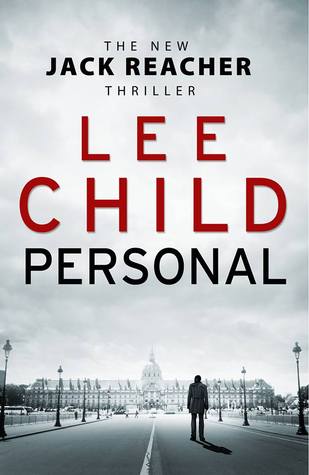 n the Jack Reacher canon, Personal opens with our vertically blessed loner, the ex military policeman, responding to an ad left in an army newspaper and which only he knows is a call for help from his former boss. Tasked with hunting down a sniper who authorities believe is going to attempt to assassinate world leaders at forthcoming summit, Reacher is back on the job. Having already tried to eliminate the French President, there are only a handful of assassins around the world gifted enough to have tried and failed – and one of them is an ex US soldier Reacher once arrested and who has a serious beef with the former army cop, hence making this mission very personal.
n the Jack Reacher canon, Personal opens with our vertically blessed loner, the ex military policeman, responding to an ad left in an army newspaper and which only he knows is a call for help from his former boss. Tasked with hunting down a sniper who authorities believe is going to attempt to assassinate world leaders at forthcoming summit, Reacher is back on the job. Having already tried to eliminate the French President, there are only a handful of assassins around the world gifted enough to have tried and failed – and one of them is an ex US soldier Reacher once arrested and who has a serious beef with the former army cop, hence making this mission very personal.
The clock is ticking…
With an attractive female side-kick thrust upon him (this is a Reacher novel after all), Reacher is sent to Paris then London to try and track down and put a stop to the assassin and what could be a world-changing, catastrophic event (killing a series of leaders). With limited information and aid from sources whose motives are often uncertain, Reacher finds himself embroiled in a turf war with some seriously tough and ruthless guys – one of whom is so big, he’s able to kick sand in Reacher’s face if he so chooses.
Yet, the closer Reacher gets to discovering the sniper’s whereabouts, the more danger in which he places himself and his young assistant. In typical fashion, those who employed him in the first place want solutions, not problems, so our protagonist is on his own.
There’s no doubt that Child writes a page-turner but, if you are a regular fan of the series, then there is a great deal of repetition to wade through. But it’s not only in matters concerning Reacher and which make him tougher than and different from your average Joe – the fact the only baggage he carries is a toothbrush and his eschewing of a diverse wardrobe. In this novel, some of the dialogue is repeated, to the point, it felt like the book needed another quick edit. Also, some of the plot points jarred a little. Having said that, when the tension starts to build and the “bad guys” emerge from the shadows to converge on their target, it’s hard to put the book down.
So, while this is not Lee at his best, it’s far from his worst and the end, though you might see it coming, is still gratifying. A great holiday or aeroplane read and you cannot ask for much more than that.
Book Review: The Monogram Murders by Sophie Hannah
Having adored 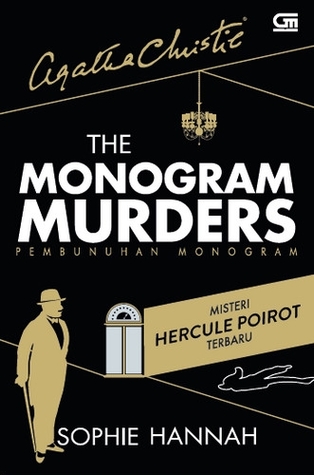 the BBC TV series, Poirot, starring David Suchet and having committed the literary cardinal sin of never reading one of Agatha Christie’s books featuring the Belgian detective (though I have read others), I thought I should give Sophie Hannah’s wonderfully titled novel, with the simply gorgeous art deco cover a whirl.
the BBC TV series, Poirot, starring David Suchet and having committed the literary cardinal sin of never reading one of Agatha Christie’s books featuring the Belgian detective (though I have read others), I thought I should give Sophie Hannah’s wonderfully titled novel, with the simply gorgeous art deco cover a whirl.
I am glad I did.
In this book, Poirot has, for some inexplicable reason, moved out of his accommodation and is living in a boarding house across the street where, conveniently, a young Scotland Yard detective, Edward Catchpool, is also staying. Acting on the recommendation of Catchpool, Poirot frequents the Pleasant Coffee House to take his meals. The book opens when Poirot is dining and a young, firghtened woman enters the coffee house and states that only when she is dead, will justice have been done before she exits, stage left.
When Catchpool is called upon to investigate the mysterious death of three motel guests, who all died at the same time in their rooms, Poirot senses that the young woman’s fears and this case are linked and thus the scene is set for Poirot to not only use his “little grey cells’ to prove they are, but educate Catchpool in the finer points of investigation. Journeying from London to a small village in the British countryside, Poirot and Catchpool find the answers to their present mystery lie in the past. But it’s up to Poirot to help the inexperienced Catchpool build those temporal bridges and join the literally bloody dots.
While I am not familiar with the style in which Agatha Christie wrote her Poirot books, there’s no doubt that when reading Hannah’s homage, it was easy to conjure a picture of Suchet as Poirot, fussing over his moustache, being particular about his things and places, so accurate was the dialogue and the descriptions of the vertically challenged, portly detective’s idiosyncrasies and ways of interacting with suspects. The language evoked a time and place very well as it did a range of eccentric British characters.
The climactic scenes with the revelation of just “who dunnit” did drag slightly, but other than that, this was an easy, delightful read that evoked the past in a charming, porcelain tea-cup way that made reading the book an easy pleasure.




